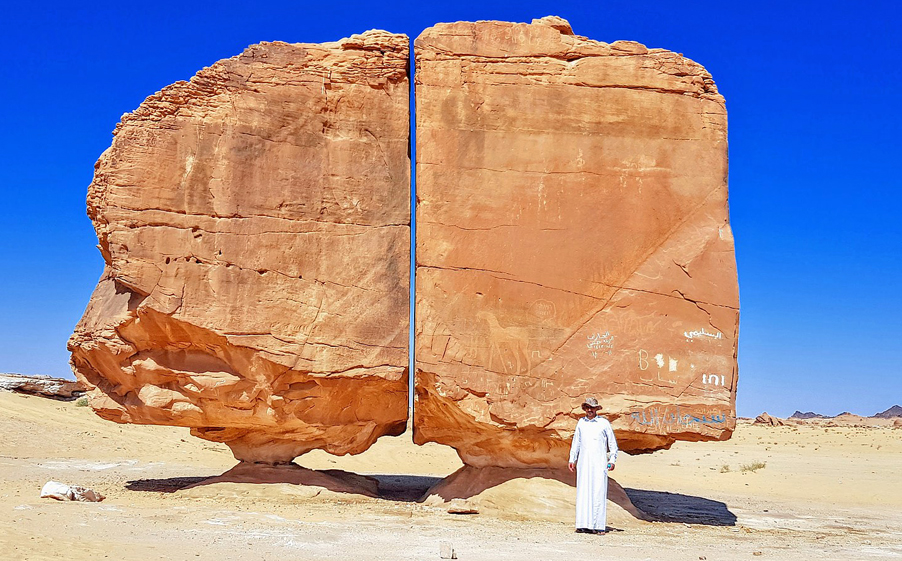Al Naslaa is a rock formation in the Tayma Oasis in northwestern Saudi Arabia.
Its peculiarity, which distinguishes it from other sandstone rocks, is a mystery to geologists and historians, as it has been split in half into two parts, both balanced on their own tiny pedestals. The split is vertically perfect, looking like the cut was done mechanically, by the human.
The massive stone measures 9 meters high and 7 meters wide, and is covered with numerous petroglyphs.
in 1883, the French explorer Charles Huber, on a trip to the region, discovered Al Naslaa and reported the peculiarity and condition of the rock, which remain in the same circumstances as when discovered.
The stone is one of the visiting cards of Saudi Arabia for lovers of antiquities and adventure seekers, hundreds of thousands of tourists from all over the world come here every year.
Access : Coordinates: 27.22945, 38.57158 / The Al Naslaa rock formation is about 50 km south of the Tayma Oasis in Saudi Arabia.
Highlights :
- The official ‘science’ rejects any thoughts about the man-made sawing, and with all its appearance they show that this is just a bizarre natural formation
- The megalith was discovered in 1883 by Charles Huver, and since then, among the researchers of antiquities, there has been a debate about who and how could have cut the stone.
- The sawing goes across the layers of stone, which is simply impossible in principle, if we talk about a natural split. Also, it would be strange that for so much time the halves of the stone did not move relative to each other, which contradicts the very idea of displacement of the supports in height, in addition, for ~ 1000 years, the halves do not collapse, despite their rather fragile supports. on this basis, it is almost certainly possible to discard the theory of the natural origin of split-sawing in stone.
Go next : The Taima Oasis is a relatively flat plain at the western edge of the Al Nafoud Desert.

